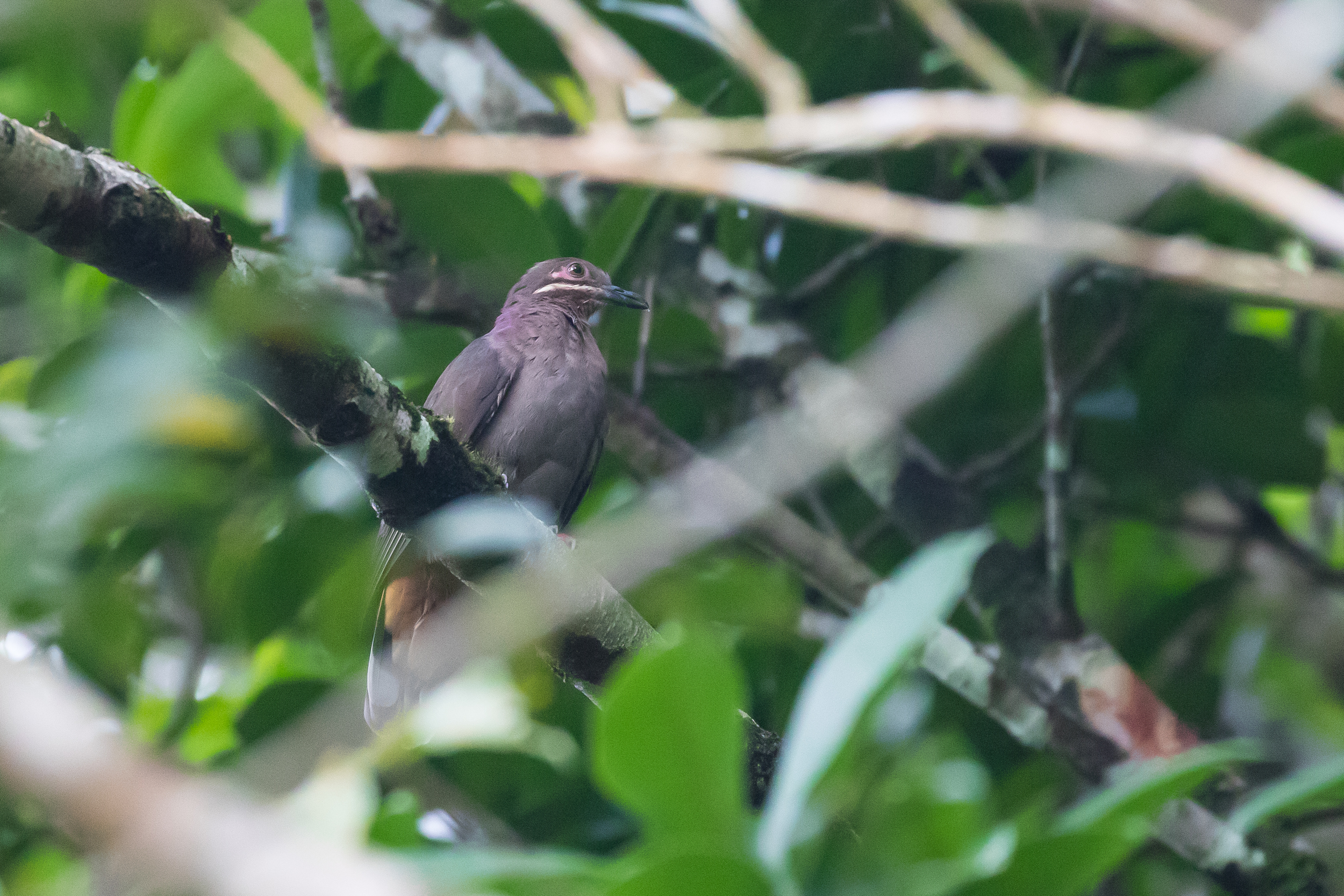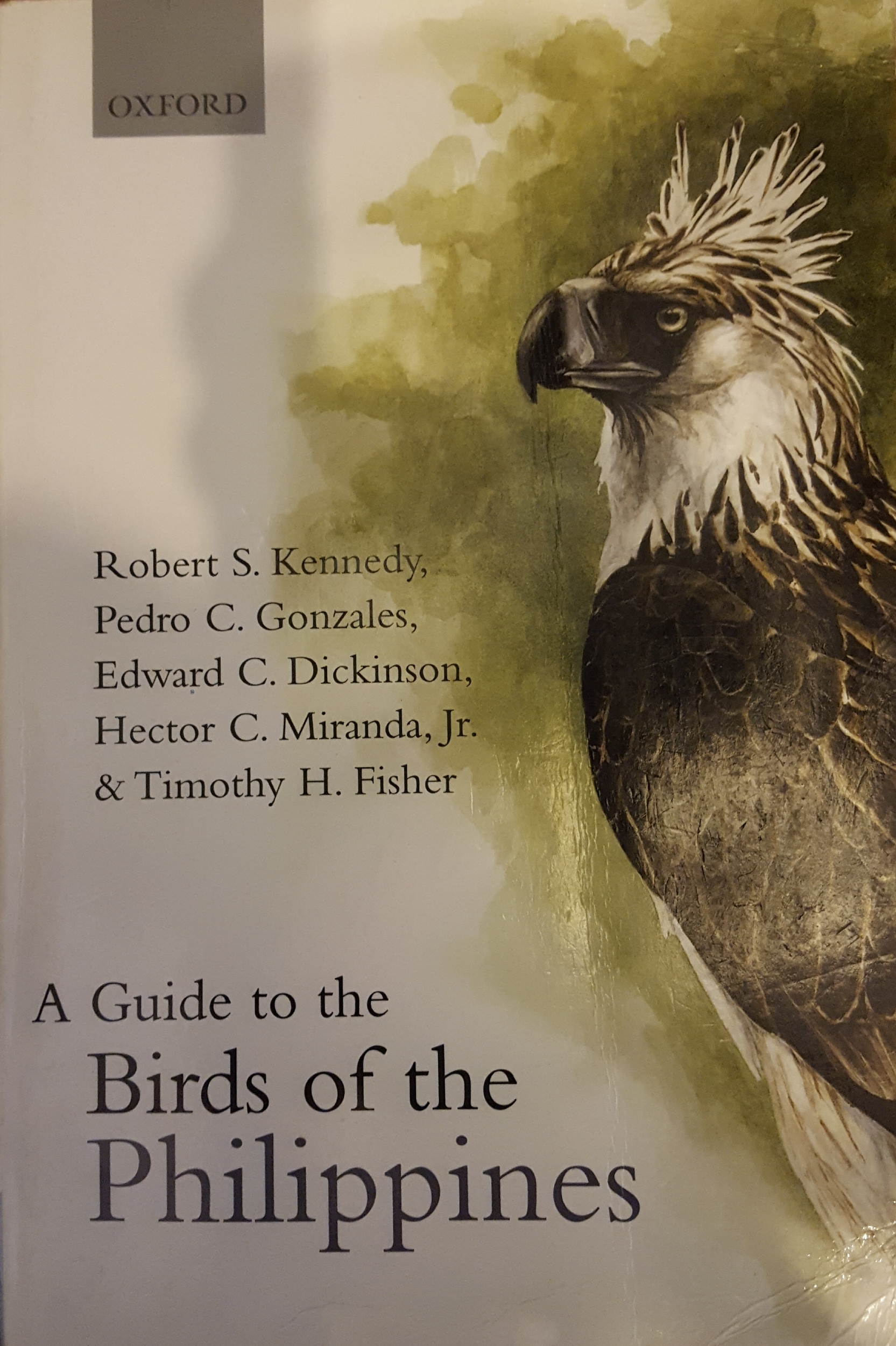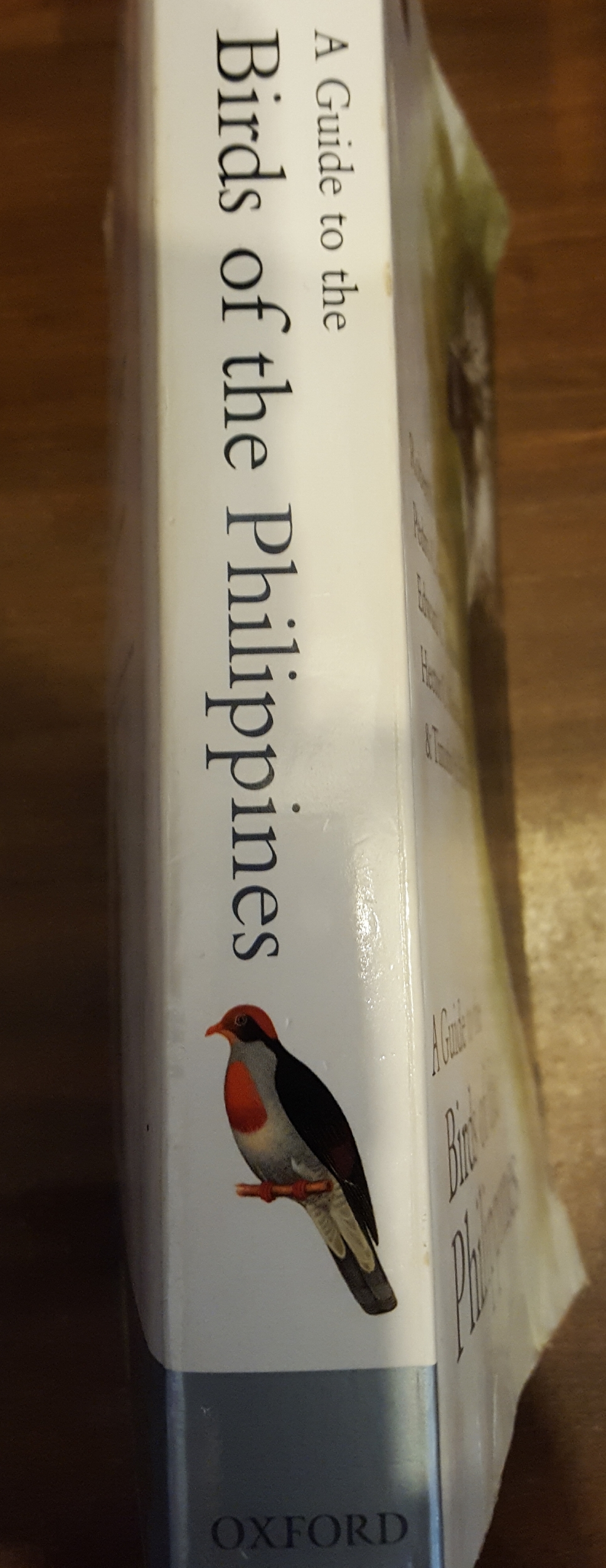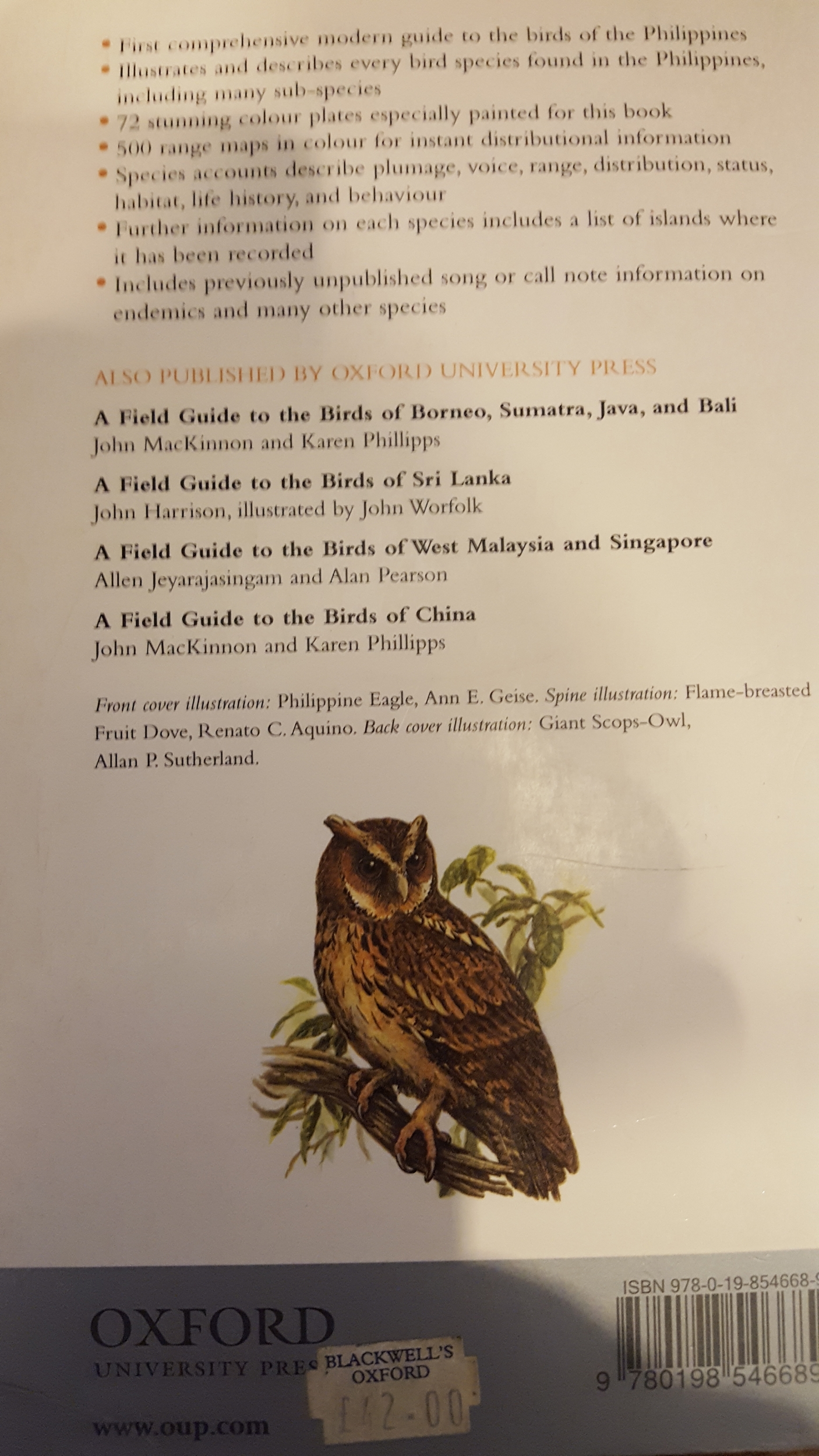continued from part 1
Once the rain had cleared we headed out again late afternoon, but it was rather unproductive. A Grey Wagtail was the only new bird seen, in part because we spent an extended period in battle with a pair of Bicol Ground-warblers. We heard these elusive skulkers once or twice during the day and around 4pm we made a concerted effort to get on one. This involved yet again clambering about in a steep gully and peering into the dark fern covered forest floor. It began to rain again, but the canopy gave some cover, and the birds were very vocal and circling us so we persisted despite the conditions. Twice I saw a dark shape bomb across my field of view, but those untickable views were my sole reward for 90 minutes in the rain. Eventually we called time, drove down to the restaurant to collect a takeaway dinner (and a few cans of San Mig for me ;-)) and showered and ate back at the house.
As it grew dark, the rain had mostly abated and we headed out for some owling. Almost immediately a Luzon Scops called from the first just above the house, but it wouldn’t come any closer to us. Having stayed in the same house on a few previous occasions, Irene knows this bird and advised we should try elsewhere — it’s not an inquisitive individual. Over a few hours we heard at least 3-4 different Scops (as well as at least a couple of Luzon Boobook, seen on Mt Makiling in 2010) but had difficulty encouraging any to show. The conditions were not great anyway, because although it was not raining, there were dense fog patches, making seeing anything in torch-light tricky. Finally at one spot we heard a different call, which Irene identified as the alarm call of Luzon Scops. This bird was clearly inquisitive — twice I sensed it fly not far over my head and after the second of these Irene aimed her torch and there about 4-5m above us was a gorgeous little Luzon Scops. It proceeded to stay in the same spot, regarding us with a mixture of indifference and disdain for ages (maybe the alarm was nothing to do with us). I tried various different camera settings, struggling to get anything right as I grappled with glasses, camera, torch and flash, not to mention the deleterious effect that fog had on any flash photography. Meanwhile Irene fired off perfectly exposed keeper after keeper in just the torch-light with her better equipment (5D3 and f/2.8 lens) and massively superior skill and technique.
Irene helped me adjust the settings in my camera, though I still struggled — I discovered the following morning, part of my problem was that I had somehow twiddled the diopter adjustment on the viewfinder, so even in-focus shots were so blurred that I could barely work out what was what. Fortunately I took enough pics that at least some were not beyond rescue in Lightroom afterwards. Most notably, my badly overexposed flash pics, blown out by the fog reflecting my flash, actually turned out well; they were sharper than the torch-light pics, and I could dial down the whites and highlights to completely remove the fog. Here is one of the better ones.

When we left him he was still sat on the same branch above the road.
We had a somewhat relaxed start to Saturday morning. It was not due to be light until 6.30 so I set my alarm for 5.30 and we gradually got underway. Notably the first bird I heard from the house itself was a Flame-breasted Fruit-dove! It sounded distant so we decided not to pursue and instead drove down the road a few km. Just above the village we stopped again and as we exited the car another fruit-dove called from quite close. Irene noted that there are two ways of seeing FBFD: Method 1 involves being early and lucky enough to be around when one flies to an open branch to sun itself. This does happen occasionally as recorded by various excellent photos from this area, but when it doesn’t, Method 2 is to spend a lot of time scanning dense canopies (especially fruiting trees) to try to find it. Of course we would not dismiss Method 1, but on this occasion the bird was minded to show itself easily; it was clear that Method 2 was the more likely to bear fruit (dove).
Fortunately the bird was fairly vocal, giving us a regular indication with its low penetrative boom that it was still around. After 15-20 mins Irene suddenly exclaimed she had it. I rushed back from around 50m away and she tried to give directions, but I could see nothing and she was no longer on it. For another 5 minutes I kept my eyes on the general area until as I scanned yet again, a marvellous flaming breast appeared in a window through the leaves. “I’ve got it!”, I exclaimed, but before I could get Irene onto it or reach for the camera, it had hopped to the left and was out of sight again. At least I’d had a decent view in binoculars, especially of its flaming orange and purple chest — have I mentioned that I like to see the eponymous feature of my lifers?
We hoped to relocate it, and some wing flaps in the dense cover made me believe it was still there, just hidden deep. But in the meantime an Amethyst Brown Dove was calling and Irene was able to tempt it down with some judicious playback — a lifer for me having only previously heard them.

I returned to looking for the Fruit-dove and eventually relocated it briefly as it clamboured in a slightly ungainly fashion around a slightly more open area looking for fruit. I managed a few record shots, but that’s all. This was a shame, but still a cracking bird and my #2 target after the pitta.



I had one more potential lifer fruit-dove for the trip and we completed the hat-trick when a gorgeous Cream-bellied Fruit-dove responded to Irene’s playback. It tooks some tracking down but I finally managed a clear view of the bird (including its creamy breast ;-)) but it was too elusive for photos.
We tried a few spots for Bicol Ground-warbler but without joy, eventually finding ourselves on the road at the site of the previous evening’s lost battle. Once again the resident was vocal and came very close, but just wouldn’t show itself. I suggested a slight change in angle of attack — we moved into the forest only about 10m, partly for a bit of cover and partly to get a slightly different view into the jungle. With patience and luck, eventually I saw a shape arrive on a log about 15m away. I could tell this was our quarry with my naked eyes, before landing bins on it just as it turned and hopped down out of sight. An upgrade from UTV (Un-Tickable Views) to BVD (Better Views Desired), at least I’d now had an unequivocal view of the whole bird and its structure, though with such brief views and in the gloom of the forest I saw virtually no plumage detail. With an element of relief rather than joy I suggested we knock it on the head; I may have wanted better views, but I was also getting fed up of sitting around trying to glimpse a near-invisible skulker. The bird had almost certainly had enough of us too!
From here we travelled further up the road hoping for Rufous Hornbills. We heard at least 3 parties but could not track any down. A soaring and calling Philippine Serpent Eagle caught my attention and I realised that above it was a flock of around 30 smaller raptors. Inspection of my record shots afterwards shows these to be Chinese Goshawk (also known as Chinese Sparrohawk); the valley we were in is a migration route and I’d just had my first ever “vis mig” experience. A Coppersmith Barbet added colour but overall it was a fairly low key rest of the morning.
Lunch at a different local restaurant (Pacific Swallows swooped over the ornamental pond) was adequate, and as we left it began to rain. We took a nap back at the house waiting for the rain to clear. I set an alarm for an hour or so’s rest, but the rain was still going strong when I roused myself reluctantly, so I rested a bit more. Once it abated we drifted out again with a couple of hours before dark. With my key targets in the bag it was all rather relaxed!
We found a couple of spots with fruiting bushes and with a bit of a vista of the forest floor. We watched Flowerpeckers coming and going, hoping that maybe a Luzon Bleeding-heart might call or walk out into a slightly clearer patch of forest. A male Olive-back Flowerpecker — a very smart olive, black and white bird — posed nicely while eating tiny berries and figs, but neither of us had cameras ready (they were staying dry in the car). Not surprisingly we dipped on the Bleeding-heart!
By the time we were ready to pick up dinner the rain had set in again. After dinner I practised camera settings and taking pics with just me and a torch (with and without flash) while Irene showered, but the rain came back and we decided on an early night instead. I enjoyed sleeping in the same bed two night in a row for the first time in more than a week.
It rained on and off all night but by dawn it had eased. I still had two low probability targets (Luzon Bleeding-heart and Philippine Dwarf Kingfisher), both of which are chances in the 10 hectares of secondary forest below the house we had rented. We followed the steep stone staircase down some when wing flapping caught our attention; a dove of some kind was in the canopy ahead. We scanned and changed our angle repeatedly, then, through a tiny window I spied an orange breast — it was another FBFD! It was visible for long enough to identify, then shifted marginally behind dense foliage and was lost forever. Meanwhile a Cream-bellied FD was calling behind us. We pinned it down to one specific tree, but try as we might we could not get a view.
The walk down the steep gully to a waterfall was scenic and very enjoyable, though it did not yield either of the remaining top targets. Back up at the house I spent time trying to pin down a Buzzing Flowerpecker for photos (unsuccessful), then we returned to last night’s spot hoping to find more birds coming to the fruit. The morning progressed fairly slowly, but a Philippine Pygmy Woodpecker enlivened proceedings.

And then final highlight (and final lifer) of the weekend for me came when Irene found a lovely male Bicoloured Flowerpecker.

After lunch we packed our stuff and made our way back to Manila. My flight was not until 10pm, but Manila traffic is notorious so I needed an extra hour or more buffer just in case, meaning a 3pm departure at the latest.
Mission accomplished. And an added bonus that I have now seen all three iconic species from the cover of Kennedy’s field guide 😀







